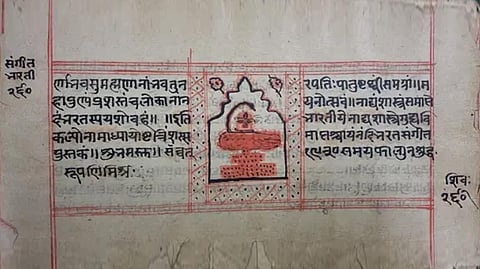

Indian Prime Minister Narendra Modi expressed his pride as the ‘Shrimad Bhagavad Gita’ and ‘Bharat Muni's Natyashastra’ were inscribed in UNESCO's ‘Memory of the World Register’.
According to the United Nations Educational, Scientific and Cultural Organisation (UNESCO), a total of 74 new entries were made in its ‘Memory of the World’ 2025 Register, bringing the total number of inscribed collections to 570.
Indian External Affairs Minister S. Jaishankar noted: "A true recognition of India's documentary heritage and rich culture. Inscription of the Gita and Natyashastra in UNESCO's ‘Memory of the World’ Register is indeed a proud moment as it recognises the importance of preserving and sharing India's knowledge with the world. Congratulate our teams who have meticulously worked on this project."
Indian Union Minister of Culture and Tourism Gajendra Singh Shekhawat described it as a "historic moment" for the country's civilisation heritage, taking the Indian inscriptions total to 14 in UNESCO's Register.
The Ministry said: "A historic moment for Bharat's civilisational heritage! The ‘Shrimad Bhagavad Gita’ and Bharat Muni's ‘Natyashastra’ are now inscribed in UNESCO's Memory of the World Register. This global honour celebrates India's eternal wisdom and artistic genius.
“These timeless works are more than literary treasures – they are philosophical and aesthetic foundations that have shaped Bharat's world view and the way we think, feel, live, and express. With this, we now 14 inscriptions from our country on this international register."
The Indian entries in the 2025 register read:
Manuscript Collection of Bhagavadgītā: Ancient Saṁgraha-grantha of Indian thought with World-wide Readership and Influence
The Bhagavadgītā, containing 700 verses in 18 chapters, is embedded within the Bhīṣmaparva (adhyāya 23-40) of the epic Mahābhārata. It takes the form of a dialogue between Kṛṣṇa and Arjuna with armies lined up for the great war intended to free Arjuna of dejection (viṣāda). Bhagavadgītā is a central text in the continuous, cumulative ancient intellectual Indian tradition, synthesizing various thought movements such as, Vedic, Buddhist, Jain and Cārvāka. Due to its philosophical breadth and depth , the Bhagavadgītā has been read for centuries across the globe and translated into many languages.
Manuscript of the Nāṭyaśāstra of Bharatamuni: A Seminal text of Indian Performing Art (pictured above)
Preserved at the Bhandarkar Oriental Research Institute and codified around the 2nd century B.C., the Nāṭyaśāstra of Bharatamuni is an epitome of the Nāṭyaveda, an oral body of knowledge of performing art containing 36,000 verses known as the Gāndharvaveda. The Nāṭyaśāstra embodies a comprehensive set of rules that define nāṭya (drama), abhinaya (performance), rasa (aesthetic experience), bhāva (emotion), saṅgīta (music), among others, thus articulating the character of Indian theatre, poetics, aesthetics, dance and music. Bharatamuni makes a groundbreaking statement in Nāṭyaśāstra, asserting that ‘no meaning can blossom forth without rasa’, a profound contribution to world literature.
MORE LIKE THIS…
According to UNESCO, among the newly inscribed collections, 14 pertain to scientific documentary heritage, in addition to collections related to the memory of slavery and archives concerning prominent historical women.
Audrey Azoulay, UNESCO Director-General, said: "Documentary heritage is an essential yet fragile element of the memory of the world.
“This is why UNESCO invests in safeguarding, such as the libraries of Chinguetti in Mauritania or the archives of Amadou Hampate Ba in Cote d'Ivoire, shares best practices, and maintains this register that records the broadest threads of human history."
Several collections document key moments in international cooperation, including the Geneva Conventions (1864-1949) and their protocols (1977-2005) in Switzerland, the Universal Declaration of Human Rights (United Nations), and the 1991 Windhoek Declaration in Namibia, a global reference for press freedom.
(*With ANI Inputs)